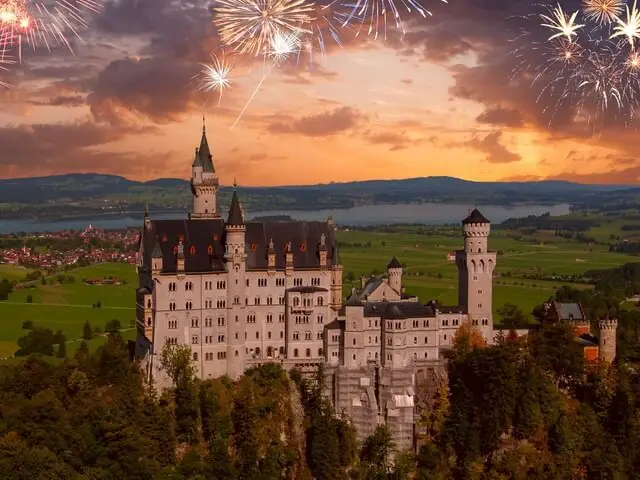The story behind Neuschwanstein is no fairy tale. Nor is the “Schloss” (castle) really a castle – more a fantasy that Walt Disney himself would have been proud of.
The force behind Bavaria’s most famous castle was Ludwig II of Bavaria. Although built over the ruins of an earlier, genuine, castle, Ludwig’s castle was more Disney than castle. Castles were built for defence with small windows and, simple, non-luxurious interiors. Ludwig, after losing is kingdom to Prussia, decided to design a castle where he could reign supreme.
Neuschwanstein is built in a style called “castle romanticism” – and it was a idealistic dream of Ludwig’s – originally designed to include 200 rooms, and partly as homage to Richard Wagner whose operas hugely impressed Ludwig.
Construction began in 1869 after the destruction of the medieval castle on site. Ludwig moved into Neuschwanstein in 1882 to oversee ongoing construction. There was no space for the royal court – and Neuschwanstein only had space for the king’s private lodging and servants’ quarters.
Ludwig eventually ran out of money, and applied to the government for loans, which were refused. In June 1884 Bavaria’s government disposed the King. He was declared insane based on limited medical evidence, and died in mysterious circumstances in 1886. The castle was never finished and Ludwig only lived in it for a total of 172 days.
Reclusive Ludwig would never have considered opening up his fantasy castle to the pubic – but that’s what happened just six weeks after his death. Visitors became the main source of income for the Bavarian royal house – until its removal in 1914, when Ludwig’s fantasy passed into the Bavarian government.
The remote location saw the castle survive both World Wars un-touched, and today receives some 13 million visitors a year.
Disneyland in Anaheim, California, Hong Kong and Tokyo are based, in large part, on Neuschwanstein. When Disney finally came to Europe, in the form of Disneyland Paris (formerly Euro Disney), the designers swapped castle designers to base the Cinderella castle on that of Mont Saint-Michel, Normandy.
The castle is busy year round with tour groups, so plan to visit as early in the day as possible. It’s a steep 20-minute walk up the hill from Hohenschwangau village. The area surrounding the castle has several spectacular short walks including Mariensbrücke (a historic 19th century steel bridge). There are also vantage points that offer great views of Neuschwanstein and the surrounding Allgäu and Tyrolean Alps. You can hike for a couple of hours to reach the top of Mt. Tegelberg (1,720m/5,643ft), or if you are feeling less fit, ride the cable car.

